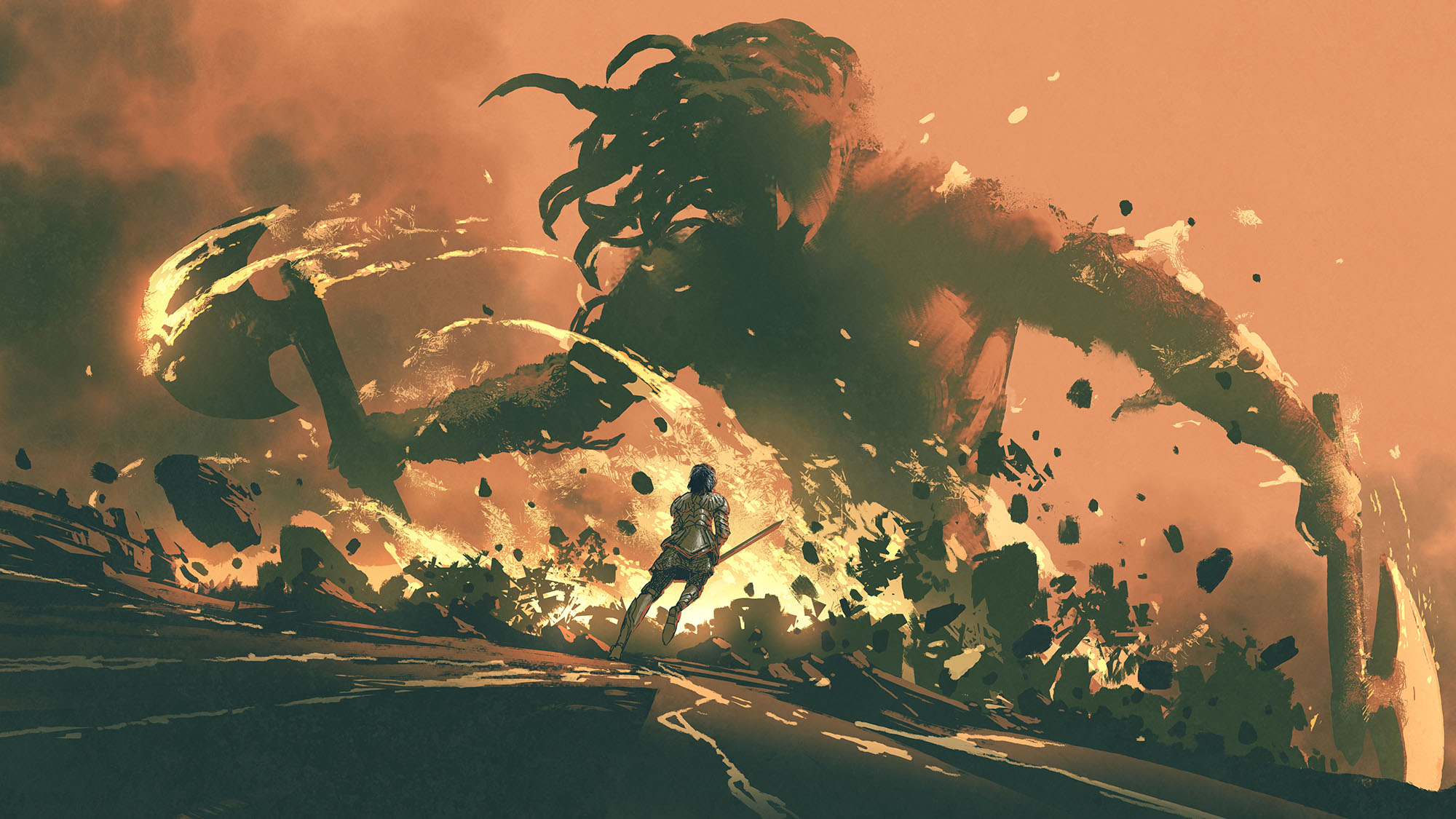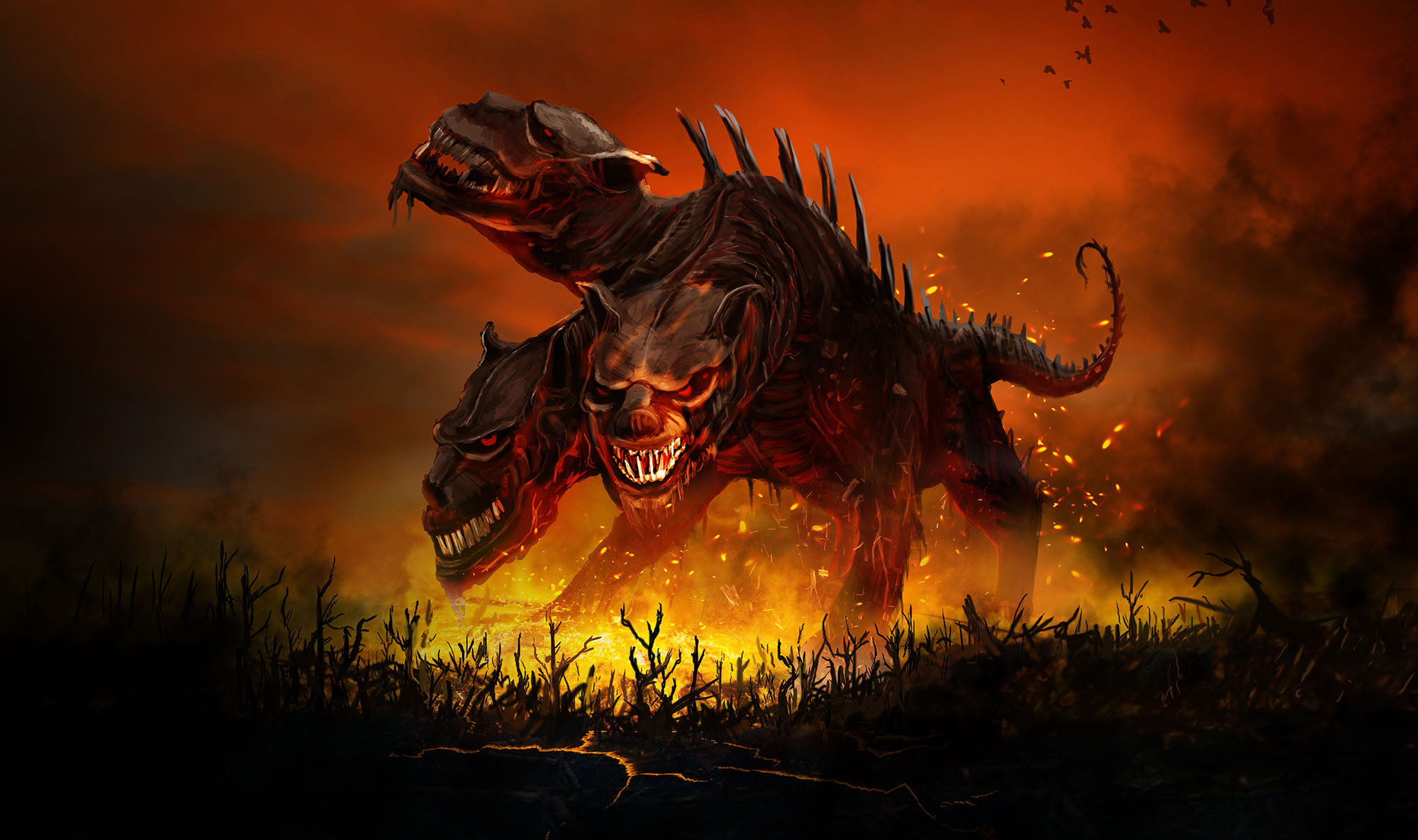In Storm King’s Thunder there are several factions active in the Savage Frontier which the PCs will either interact with, join, fight, or all three:
- Emerald Enclave
- Harpers
- Order of the Gauntlet
- Zhentarim
For the DM, however, it’s quite difficult to come to grips with these factions, as references to their current activities and resources are scattered randomly throughout the book with only limited cross-referencing.
So I’ve assembled this reference to make it easier for you to juggle these factions in play. The PCs are looking for a faction? A faction member is fleeing to their nearest safehouse or summoning reinforcements? You’ve got a random encounter with a faction member and you want to drop a lead pointing to a local faction operation?
Now you can just consult the reference below and be good to go.
Note: Although I’ve opportunistically included some references to other sourcebooks, this should not be interpreted as a complete survey of those or any other published sources.
Finding a Faction: If the PCs belong to a faction, are in an unfamiliar area, and would like to try to find a local safehouse or operative they can make a DC 15 Intelligence (Investigation) check. The check can be made at advantage in a major metropolis (e.g., Waterdeep) and should be made at disadvantage if they’re in a tiny community in the middle of nowhere (e.g., Nightstone) unless there’s a known presence described below.
If the check succeeds, they find their faction’s local presence. (If you’re at a loss for what that might be, just pull one of the “Wanderers & Random Encounters” listed for the faction below.)
If the check fails, they either failed to find the local faction presence (if it’s described below or if you determine that there should be a local faction presence) or it means that their faction isn’t active in the area.
EMERALD ENCLAVE
- Goldenfields, a major stronghold of the Enclave. (p. 44)
- Fireshear: Emerald Enclave runs a griffon stable overseen by Dasharra Keldabar. (p. 83)
- Jalanthar: Quinn Nardrosz, the head of the Council of Elders, is an Enclave member. (p. 94)
- Shadowtop Cathedral, a meeting place of the Enclave overseen by the treant Turlang. (p. 107)
- Waterdeep: Klarz, the captain of the Koalinth, owes the Emerald Enclave his life.
Wanderers & Random Encounters
- Aerglas, a moon elf who hasn’t been seen in many years. (p. 51)
- Tharra Shyndle, a druid and friend to the treant Turlang. (p. 51)
- Zindra Winterbow, a scout in the area of Triboar. (p. 57)
- Vordana Jezral, a ranger. (p. 71)
- Saarvin, a ranger and self-proclaimed King of Frozenfar. (p. 71)
- Ghalvin Dragonmoor, native of Goldenfields held prisoner in Grudd Haug. (p. 144)
HARPERS
- Bryn Shander: Beldora is the local Harper agent, disguised as a homeless beggar. She has a sending stone connected to Thwip Ironbottom in Hundelstone. (p. 40 & 249; gives quests on p. 44)
- Hundelstone: Thwip Ironbottom, an inventor, is the local Harper agent. Has a sending stone connected to Beldora in Bryn Shander. (p. 44 & 92)
- Silverymoon: A haven for Harpers, but no details given.
- Triboar: Lord Protector Darathra Shendrel is a Harper agent. (p. 53 & 253)
- Yartar: Harper agents are established here. See Inner Circles.
Everlund
- Moongleam Tower: Harper stronghold. Overseen by Moonlord Davianna Yalrannis. (p. 82)
- Krowen Valharrow, a wizard who lives in Moongleam Tower (p. 44 & 60 & 82).
- Dral Thelev: Harper agent living in Danivarr’s House. (p. 60)
Waterdeep
- Open Lord Laeral Silverhand: A friend to Harpers and will agree to meet with them. (p. 157)
- Lord Zelraun Roaringhorn: A Harper agent. (p. 42)
- Captain Zaldar Floshin, captain of the Kelpie’s Kiss. Hires his ship to the Harpers. The bosun, Ilkara Levari, is a Harper agent. (p. 220)
- See Dragon Heist, p. 37, for additional details.
Wanderers & Random Encounters
- Artus Cimber, a former harper who is the last known owner of the Ring of Winter. (p. 1)
- Endrith Vallivoe, retired caravan merchant and friend to the Harpers. (p. 232)
Inner Circles
- A network of teleportation circles controlled by the Harpers. (p. 117-18)
- Everlund Circle: Located in Moongleam Tower.
- Loudwater Circle: Located in the Smiling Satyr tavern.
- Mirabar Circle: Located in stable house loft attended by Zazspar Bronzefire.
- Neverwinter Circle: Located in the attic of a rowhouse.
- Waterdeep Circle: Located in the City of the Dead.
- Yartar Circle: Located in a dilapidated villa.
ORDER OF THE GAUNTLET
- Sir Baric Nylef (Bryn Shander, p. 44 & 249)
- Sir Lanniver (Neverwinter, p. 44)
- Hawk’s Nest (p. 90) is controlled by the Order and raises hippogriffs.
- Helm’s Hold (p. 90, SCAG p. 85) is ruled by a splinter sect of the Order called the Order of the Gilded Eye.
Waterdeep
- Waterdeep has faction representatives. (unspecified in SKT; Dragon Heist, p. 39)
- Halls of Justice, a temple of Tyr located in the Castle Ward. (DH, p. 39)
- Arilosa Adarbretn, captain of the Coin Toss and financial supporter of the Order. (p. 220)
Wanderers & Random Encounters:
- Lady Hariana Hawkwinter (p. 71)
- Sir Jordeth Tavilson (p. 71)
ZHENTARIM
- Nightstone Team, including Kella Darkhope (p. 25) and Xolkin Alassandar’s agents (p. 27).
- Triboar Travelers, a mercenary group based out of Triboar (p. 54). Led by recruiter Urlam Stockspool.
- Fireshear: Zhentarim mercenaries have been hired to guard griffon stables controlled by the Emerald Enclave (p. 83).
- Loudwater: The high lord, Telbor Zazrek, is a paid puppet. (p. 97)
- Mornbryn’s Shield (p. 99) has been taken over Zhentarim strike team led by Oboth Thornstell.
- Rassalanter: Yondral Horn, innkeeper at the Sleeping Dragon, is on Zhentarim payroll. (p. 104)
Daggerford
- The city has hired a large Zhentarim mercenary force led by Nelkin “the Snail” Danniker (p. 80).
- Zhentarim agents in Daggerford are handing out interest free loans to compete with local moneylenders. (p. 53)
- Zirazylym: An undercover bronze dragon and regular customer at the Happy Cow. (p. 80)
Orlbar
- Bargewright Inn (p. 73), controlled by Zhentarim led by militia-master Chalaska Muruin and innkeeper Nalaskur Thaelond. Also the vampire Arik Stillmarsh.
- Zhentarim fortified tower west of town that was recently abandoned due to a giant attack (p. 80).
Waterdeep
- Sees tensions between Zhentarim and Xanathar’s Thieves’ Guild. (unspecified in SKT; see Dragon Heist)
- Captain Drashk, captain of the Lost Cause. (p. 221)
Trade Routes
- Dawn Pass, the Zhentarim have built a stone gatehouse between Llorkh and Parnast (p. 80).
- The Black Road, a trade route controlled by the Zhentarim (p. 77).
Wanderers & Random Encounters:
- Sorelisa Zandra and Naeremos, bounty hunters (p. 43). Looking for Weevil in order to protect him.
- Shalvus Martholio (p. 46 & 250, gives quests on p. 51). Shalvus works for Nalaskur Thaelond (see Bargewright Inn). He later returns to the Bargewright Inn waiting for a new assignment.
- Frylo Nelgorn and a Zhentarim team are meeting fire giant representatives in the ruined city of Nesmé. (p. 100)
- Nilraun Dhaerlost, a Zhentarim mage captured by Storvald and helping him search for the ring of winter (p. 156).
- Jasper Dimmerchasm, who was sent to negotiate with Zalto and is now held prisoner. (p. 184)
Former Holdings
- Llorkh: Zhentarim previously conquered the town, but abandoned it when the mines dried up (p. 96).
- Newfort: Originally founded by the Zhentarim, but they’ve lost their influence. (p.101)
- Thornhold: Formerly held by the Zhentarim, but now controlled by dwarves. (p. 111)
Other
- Everlund: Zhentarim has a strong presence, but no details are given.
- Mirabar: Zhentarim has strong presence, but no details are given.
- Neverwinter: Zhentarim has strong presence, but no details given.
- Silverymoon: Zhentarim has strong presence, but no details given.
- Yartar: Zhentarim has strong presence in Yartar, but no details given.
















